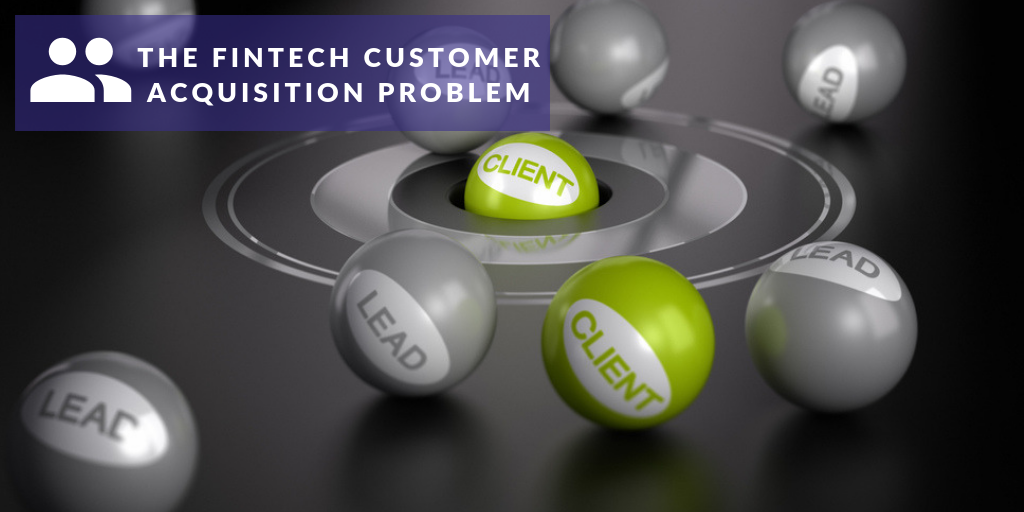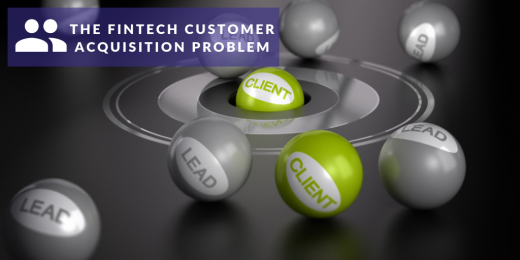Empathy: The Missing Link in Fintech Marketing

I was once talking shop with a fellow content marketer when she said something that tickled my ears:
“I can tell the difference between marketing from an empathetic person versus someone who has tunnel vision around business results.”
Mind-blowing, right? The more I thought about it, though, the more I realized I could tell the difference too. Some marketing copy — whether it’s an ad to go buy a hamburger or a report on why Blockchain will revolutionize the healthcare industry — really “gets it”. Then, there is marketing copy that does not.
You’ve probably seen the difference, too. Some marketing copy is evocative, rhythmic, to-the-point, and resonant. Other copy is bland, wordy, and flat. The thing is — creating a solid story arc and proper tone — requires a marketer to have the ability to put themselves in the buyer’s shoes and to understand the buyer’s experience.
Turns out, this translates in a big way when it comes to business results.
Why B2B Fintech Needs Empathy
We know that emotional connection in B2B marketing is important. That notion is tightly coupled with the idea of empathy in marketing. In both cases, B2B fintechs face compound challenges in connecting with prospective buyers:
- Brand credibility has not yet been established
- Fintechs face the inertia of the known when it comes to convincing buyers to take a chance on an unfamiliar or unpredictable product/solution (Trust)
- “Fintech” is still a new concept to many prospective buyers, calling for increased education around the problems to be solved and new solutions that can solve them.
Emotional connection is the conduit for this connection, but emotional connection also requires an empathetic mindset. Unfortunately, many businesses stray away from the notions of emotion and empathy for fear of being unprofessional or “soft”. The problem with that logic is that businesses selling to other businesses are just people selling to other people. When we lose sight of this, we become less effective at selling. We look at it as selling instead of remembering that we are looking for people who need our solution and giving them the information they need to make the right decision.
Empathy in Fintech Marketing Yields Results
It’s easy to think that, as marketers, our goal is to deliver page views and downloads and subscriptions and sign-ups for demos. That’s largely how we’re evaluated, so it’s easy to fall into this one-track mindset. In reality, our goal is to create messaging and stories that will resonate with our target audience in a way that is helpful to them. Because when we’re helpful, we make it easier for the sales team to do its job. When we’re helpful, we attract page views, downloads, subscriptions, and sign-ups. When we’re helpful, we’re simply giving people what they want: a solution.
This all sounds lovely in theory, but what does it look like in action?
Be Human
Great storytellers draw upon their own experience to create a connection with their audience. Tapping into our own unique experiences enables us to relate to others. Building those experiences into marketing stories that are relevant to buyers is an entertaining way to educate prospects. We can offer prospects information wrapped in human experience that people understand and connect to.
In fintech marketing, that means weaving “people stories” into content to bring your solution to life. While technical specs and data and stats can frame how your service or solution works, people are more apt to understand this from a human perspective. Frame the problem and the solution in a way that taps into the human side of points, challenges, frustrations, and motivations.
Use Appropriate Tone & Voice
Find a tone and voice that works for your business and your audience. The key is to find the right balance between extremes. Start by not taking yourself too seriously. Yes, sounding authoritative can be important at times. But you shouldn’t overuse this one. Find a way to add some personality and to build your business’s voice. Aim to find a voice that brings your mission and values and culture to life.
On the flip side, don’t overdo it. If your tone tends toward the “fun & playful” side, you may need to dial it back when presenting information on certain topics or via certain media or on certain channels. The best presentation is usually a hybrid of your unique and personal tone tempered by the preferences of your audience and the nuances of different channels/media types/topics.
Use Data to Drive Empathy
The scientists in the room are cringing right now. “You can’t measure empathy. What metrics do we track?” This is true; however, you can use the data you have to execute tests based on well-founded hypotheses.
Start with audience personas to figure out where your visitors are coming from (geographically as well as referral sources), which types of articles they viewed the most, and how long they spent on different pages of your site. This information can be used to inform the types of sources from which they gather information, the types of topics they may be researching, and some demographic information. All of this can be used to understand the psychology of your target buyer and to inform the content you create for them.
Also, conduct keyword research to understand what pain points are causing the most anxiety for your buyers. In real life conversations, you listen to the person you’re in a conversation with to get a sense of where they’re coming from. Online, we “listen” through social listening/monitoring and keyword research to tap into people’s desires and motivations and curiosities. We then take that information and fill the gap with meaningful content that addresses these things. Use the data and insights you have to inform your marketing and to paint your content with empathy.
Drop the Ego
In the end, it’s about pivoting from reliance on what you know to intentional marketing initiatives that ask “how can I help?” Put yourself in your customers’ shoes and think about what you might need or want to make your life easier. Use that as a starting point for building out effective, data-driven fintech marketing campaigns. It will take some digging, a bias toward action, and a softening of the ego — but it’s not rocket science (unless you’ve created a P2P app that works in space :). When you strive to understand your customers, you’re better able to connect with them. Connection fosters trust and makes you a more “likable” brand among prospective buyers. And guess what: people buy from people they like.
A version of this article originally appeared on the Content Rewired blog.
Business & Finance Articles on Business 2 Community
(38)


